Tour the more than 30 structures lining the 'Mall of Texas' Capitol Complex
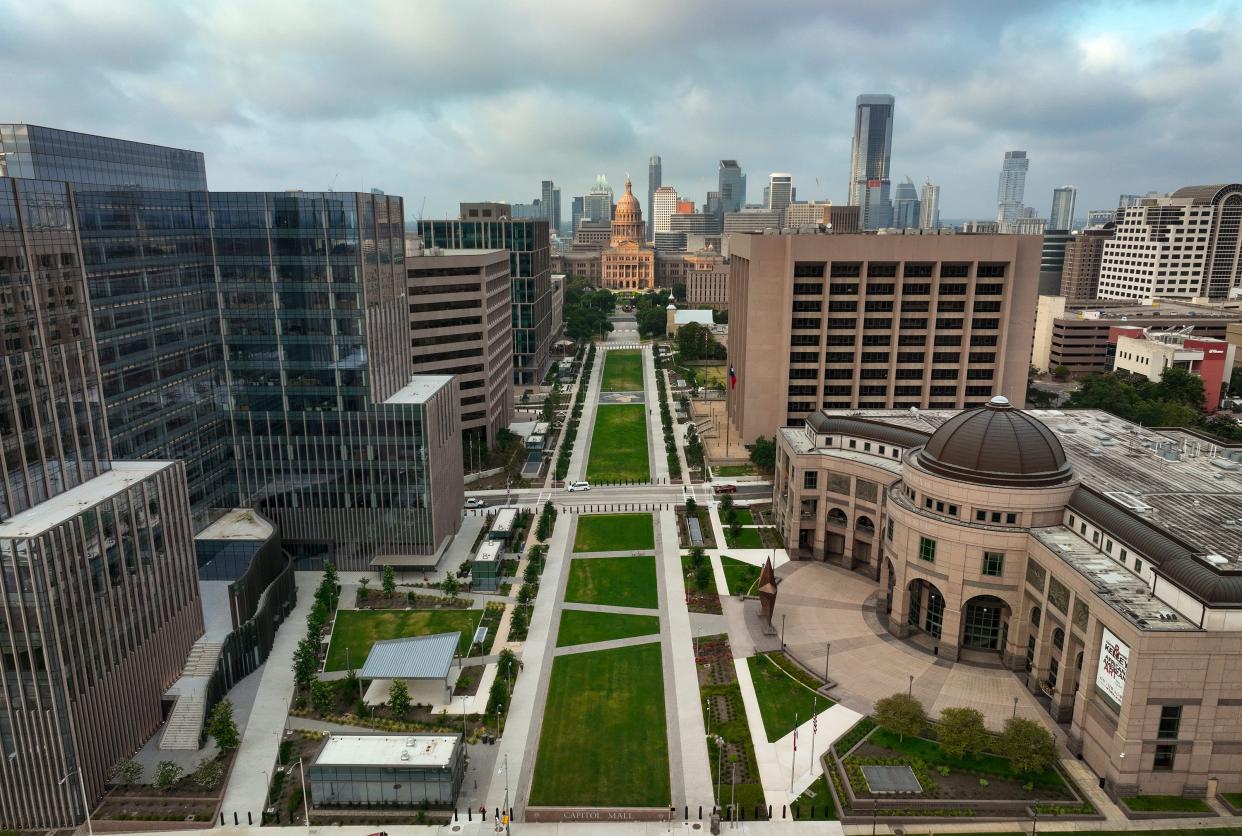
I call it the "Mall of Texas."
After all, the new pedestrian park that runs from the Capitol grounds to the University of Texas campus belongs to all of us.
Like the National Mall in Washington, D.C., the new Capitol Mall — its official name — in Austin is lined with vast museums, hulking government edifices, elegant historic buildings and multiplying monuments.
Unlike the so-called Mall of America in Bloomington, Minn., however, it is not dedicated to the gods of consumerism.
Truth be told, it could use a few more commercial touches. One might, for instance, like to purchase a cup of coffee during an outing on an early Sunday morning.
That was when I walked the Capitol Complex, including the new mall, with architectural historian Charles Peveto.
Exclusive: First look at Sign Bar, a playground for Austin nostalgia
After strolling several miles counterclockwise from 10th Street to above Martin Luther King Jr. Boulevard and back — while circuitously assessing more than 30 public buildings — we visited his office at the headquarters of the Texas Historical Commission.
That was where Peveto shared an eye-opening find: A clipping from the March 13, 1965, issue of the Austin American-Statesman that shows an artist's rendering of a proposal for the Capitol Complex, which, at that time, had been months, perhaps years, in the idea stage.
It reveals a proposed new Governor's Mansion on a man-made hill planted near where the Blanton Museum of Art now rises. It shows a series of modest office towers clustered around the Capitol, which were built.
The proposal introduces the concept of a future Mall of Texas.
That's right: The relatively unheralded, mostly car-free new mall has been in the works for some 60 years.
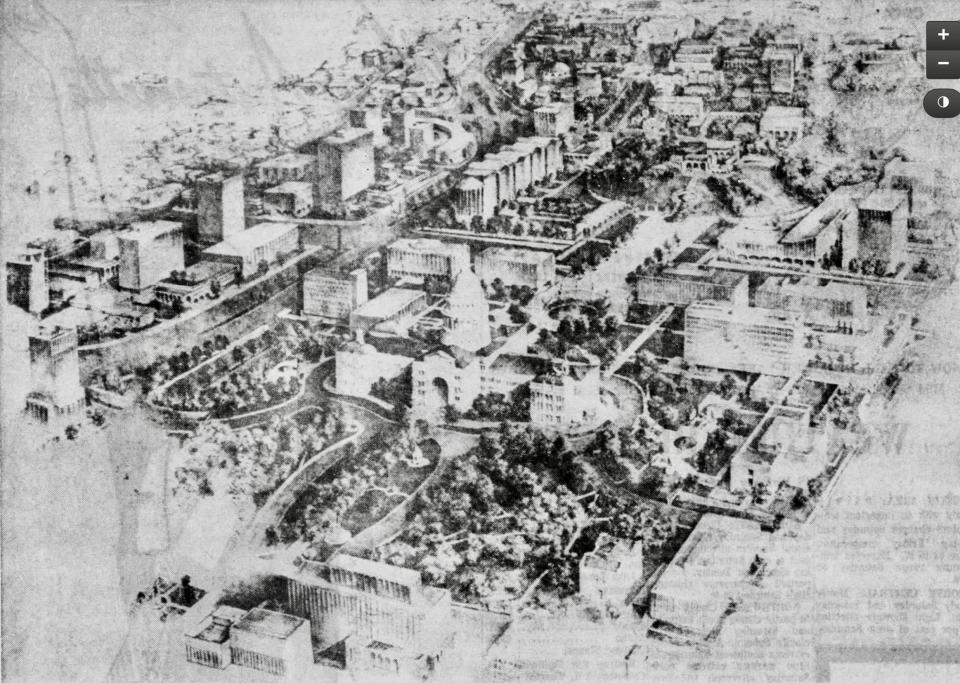
Start your tour south of 11th Street
You, too, can discover the Capitol Mall, along with the entire Capitol Complex, although try it early in the morning during the hot months.
Peveto and I started our tour with the state buildings on the south side of 11th street. Then we meandered generally northward.
More: Governor's Mansion houses living Texas history
Governor's Mansion (1010 Colorado St.): In former days, this executive residence, like the White House, was considerably more open to the public. Constructed between 1854 and 1856 by crews under the leadership of master builder Abner Cook, it was quite sophisticated for what was still a frontier town. It was firebombed while under renovation in 2008. Since the rebuilding, public tours have been tightly restricted. One can glimpse its Greek Revival beauties from behind a fence on a stretch of Colorado Street closed to vehicular traffic.
Austin Daily Tribune Building (920 Colorado St.): More recently known as the Ernest O. Thompson State Office Building, this tower was built in the Moderne style in 1941 by a conservative businessman to house the Austin Daily Tribune (1939-1942), a short-lived competitor of the Statesman. Plain tan bricks clad most of the structure, but note the subtle decorative details and take a peek inside the vintage lobby.
Thomas Jefferson Rusk Building (208 E 10th St.): Built at an angle with a mirror veneer that reflects the front of St. Mary's Cathedral, this flashy building originally served as offices for a savings-and-loan outfit. It now houses the Texas Treasury, among other entities.
James Earl Rudder Building (1019 Brazos St.): Surely imposing at the time it was built, this 1918 Beaux Arts building with very high ceilings reminds me of buildings in the nation's capital, although the use of dark bricks has always seemed awkward to me. Among the offices found here are those of the Texas Secretary of State. The State Insurance Annex, which we skipped, rises just to the east.
Dewitt Greer Building (112 E. 11th St.): A prominent example of the "Pueblo Deco" style, which incorporated Native American patterns into art deco architecture, this headquarters for the Texas Department of Transportation does not get nearly enough attention. It's a beauty. A new TxDOT campus rises in Southeast Austin on East Stassney Lane.
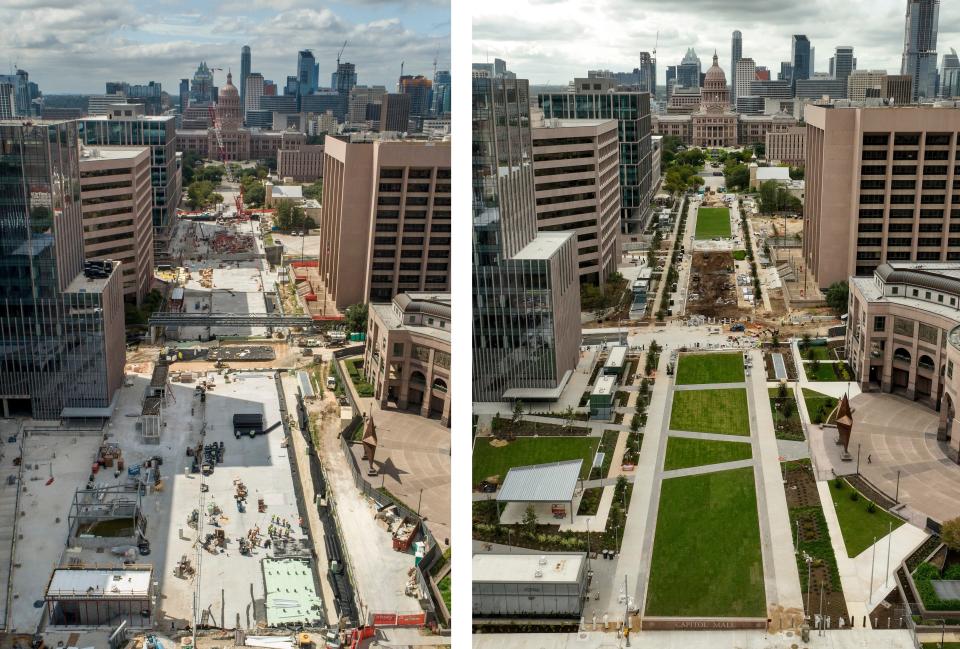
Into the heart of the Capitol Complex
These are the buildings that most tourists associate with the grand old Capitol.
Texas Capitol (1100 Congress Ave.): Completed in 1888, this domed palace of the people was once the largest building for hundreds of miles in any direction, and in my opinion, it is as awesome as ever. It can take several hours to fully examine its interior spaces, and that does not count time spent on the parklike grounds, home to dozens of monuments, some of them controversial.
Capitol Extension (1100 Congress Ave.): After a 1983 fire damaged the Capitol and starkly demonstrated the hazards of its overstuffed offices, the State Preservation Board was put in charge of several buildings in the complex. Underground, planners wisely added some parking as well as many offices and meeting spaces. Don't skip the large cafeteria and a small gift shop.
Texas Capitol Visitors Center (112 E. 11th St.): Originally built in 1856 and 1857 as the Texas General Land Office, this Romanesque Revival gem comes with loads of history. I recently learned, for instance, that it once served as a Confederate Museum. Now devoted to introducing the Capitol, it also houses temporary exhibits on aspects of Texas culture and history. Although the exterior is currently hidden behind scaffolding, the center is open.
Lorenzo de Zavala Building (1201 Brazos St.): This handsome, imposing edifice, built in 1959 and inaugurated in 1961, houses the Texas State Library and Archives Commission. A good portion of the archival material, however, is kept elsewhere. Here you will find a small but well-curated lobby gallery and a dignified public reading room.
More: Cleanup begins after Texas Capitol Extension flood following heavy rain
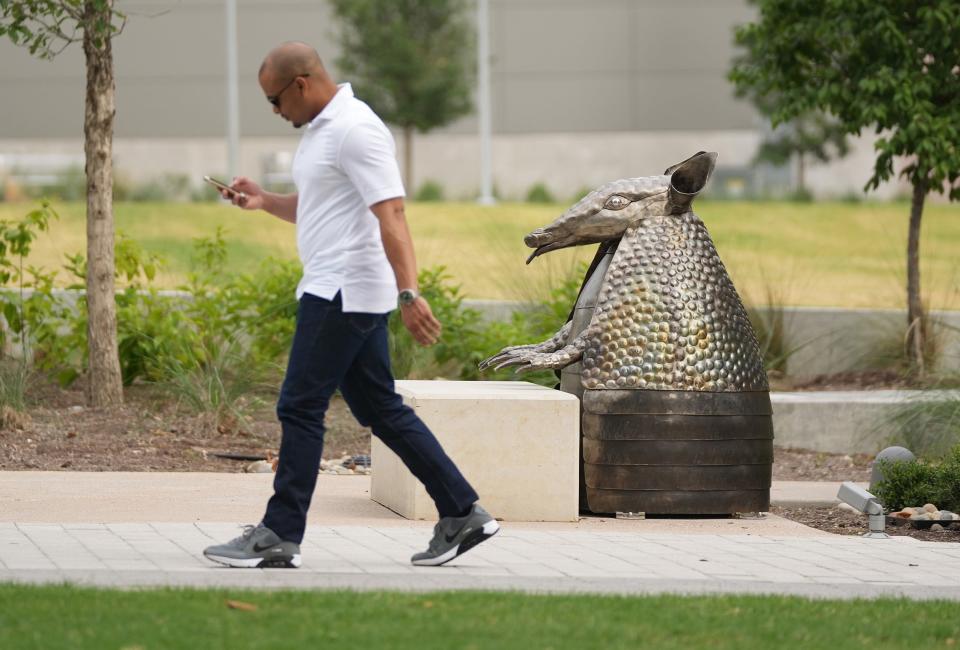
Sibling towers, mostly faceless
From the 1950s through the 1970s, the state government went on a building spree as Texas's population boomed and governors envisioned centralizing power around the Capitol. The planners clearly did not, however, want to compete with the baroque 1888 landmark. Therefore, several boxy office buildings are fronted in flat granite shade panels that blend in with the colors and materials of the Capitol. To their credit, these structures seem perfectly utilitarian, but they do not inspire reverence for their functions, which, again, was probably intended.
Texas Supreme Court Building (201 W. 14th St.): Built in 1956, this austere hall of justice is the only one of these granite-paneled office buildings slung around the Capitol that comes with any visual grace. The stone gives way to expanses of glass and a tall, light-filled entry lobby. This is formal public architecture done right. Behind it are the less distinguished Tom C. Clark and Price Daniel Jr. buildings; nearby find the restrained and businesslike Texas Law Center.
Five sibling towers: These closely allied buildings, all very near the Capitol, appear designed to repel attention, perhaps intentionally: the State Insurance Building, Sam Houston Building, John Reagan Building, Texas Workforce Commission Headquarters and TWC Annex.
More: Here's how cocktails became legal to serve in Texas, decades after Prohibition ended
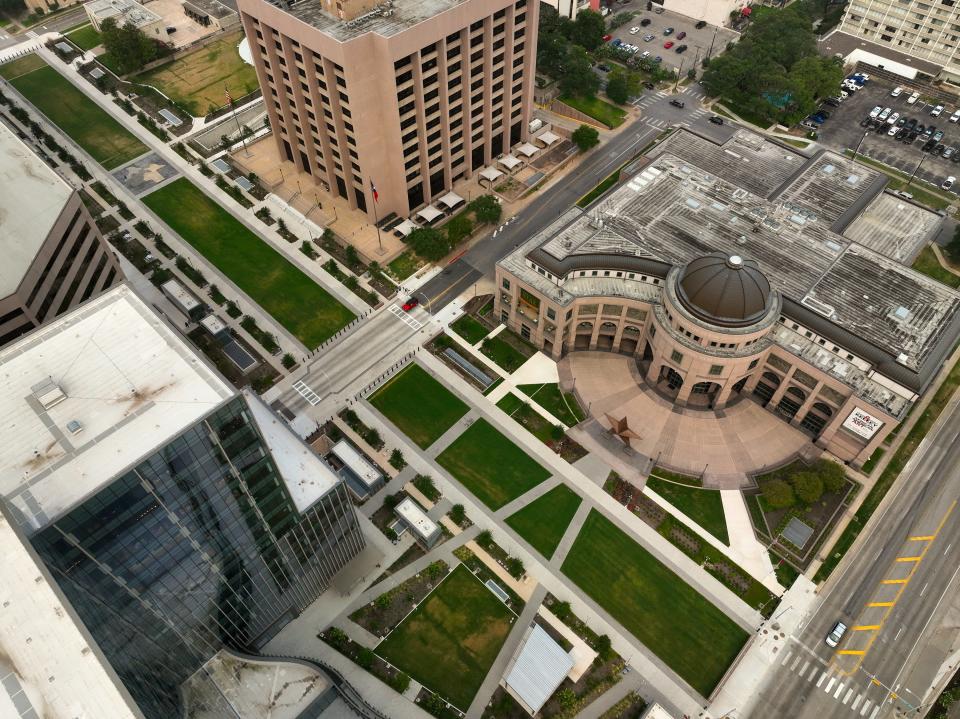
Saved Texas historical remnants
Now we enter Mall of Texas proper. Blessedly, some smaller historic structures have been saved and improved at the south end, near where two more office buildings are being built.
Texas Historical Commission (1511 Colorado St.): Four historic buildings form this complex. The most charismatic is the 1882 Gethsemane Lutheran Church Building, constructed with bricks from a previous Capitol that burned to the ground. It holds the agency's valuable library, a place to find information on significant buildings all over the state. It directly faces the new mall. Behind the church/library is Luther Hall, the 1940 school that the agency recently restored, including the removal of paint from the Butler Brick. (Never paint brick or stone.) Two others in the complex: The 1856 Carrington-Covert House and the 1948 Elrose Apartment Building.
Catholic Diocese of Austin Chancery (1600 Congress Ave.): Also facing the mall, but not officially a part of the Capitol Complex, is this perfectly proportioned 1957 building that has over the years housed administrative offices of the diocese as well as the bishop's residence.
More: History is a click away: The best digital tools for Texas history buffs
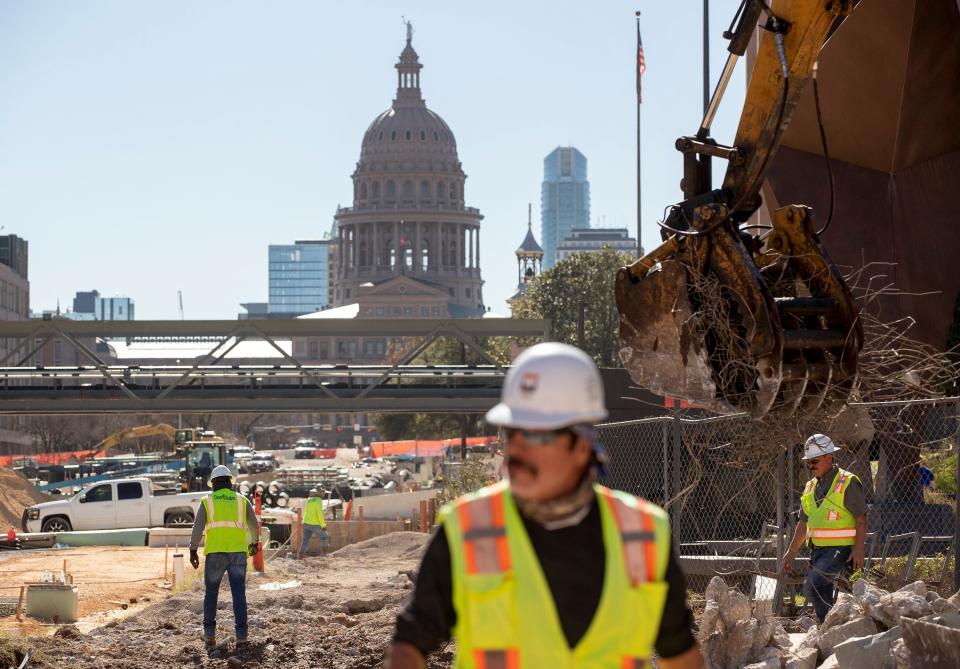
Older and newer giants
Unlike the faceless towers near the Capitol, these massive office buildings make more distinct statements. The new glass-fronted Barbara Jordan and George H.W. Bush towers complement the older neighbors and lend balance to the Capitol Mall, which includes some fun but not monumental sculptures.
William P. Clements Building (300 W 15th St.): Two blocks from the mall, this building, which looks like a bank, reminds us that during 1980s through the 1990s, the state paused construction of most new buildings in the Capitol Complex, for two reasons. The crash of the real estate and savings-and-loan industries meant that empty commercial towers like this one were available to rent or purchase cheaply. Also, some state leaders wanted to decentralize government offices, in part to cut down on commuting times. (The pandemic, the internet and working from home have probably done as much to ease the Capitol Complex's traffic snarls.)
Robert E. Johnson Building (105 E. 15th St.): On your right as you head up the mall is this newish office building with large windows and humane courtyards.
Barbara Jordan Building (1601 Congress Ave.): One of the two quite new office structures, it radiates a lightness that most of the older giants do not.
Stephen F. Austin Building (1700 Congress Ave.): Brutalism is back as a style, but this building, which houses the Texas General Land Office, holds an exquisite little map library just off the entry lobby.
William B. Travis Building (1701 Congress Ave.): I'm not aware of a public-friendly amenity in this sturdy behemoth.
George H. W. Bush Building (1801 Congress Ave.): The other brand-new glass office tower is more complicated and formal than the Jordan. Will it house a museum someday?
LBJ Building (111 E 17th St.): This oldish giant is now hidden behind newer structures.
Employee Retirement System Building (200 E. 18th St.): An ambitious building that once had even more ambitious features, it now seems out of place.
More: A rare journey at the Texas General Land Office
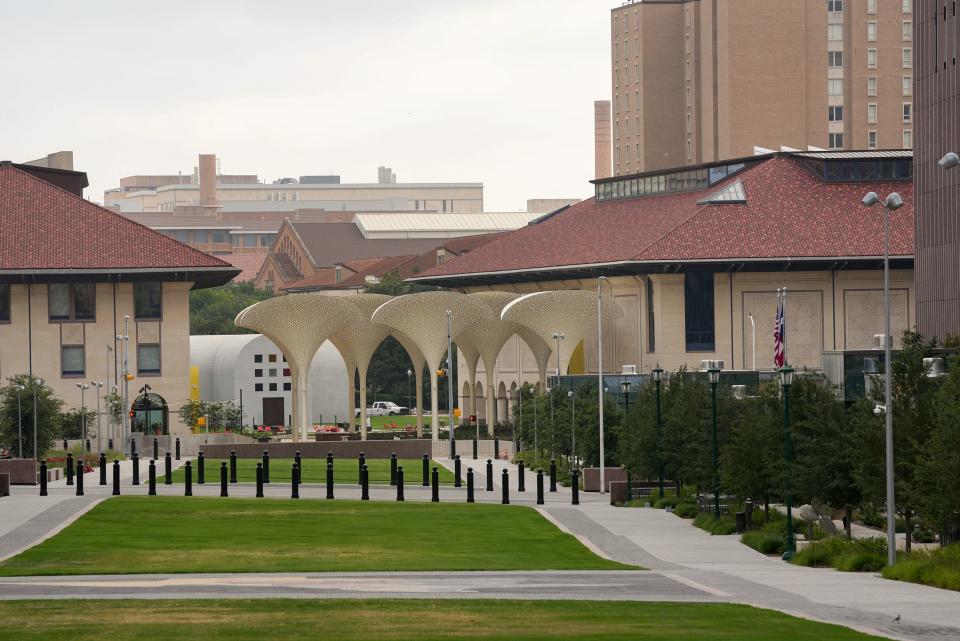
The Blanton and the Bullock
A Texas music museum was once proposed for the Bush Building, in order to form a sort of cultural triad with the Blanton and the Bullock at the north end of the mall.
Bob Bullock Texas State History Museum (1800 Congress Ave.): Opened in 2001, the state's history museum roughly borrowed its exterior look from the Capitol. Critics disapproved, but the place has turned into a lively center of activity with improved exhibitions and enlightened takes on borrowed artifacts. For better or worse, the Bullock does not own a collection.
Blanton Museum of Art (200 E. Martin Luther King Jr. Blvd.): Opened in 2006, UT's Blanton was dinged by critics for its conservative exteriors. Yet the interior spaces came alive, and just this year, the landscaping around the main buildings, including perforated metal shade structures that look like lilies, and the signature Ellsworth Kelly building-as-art have given the museum a readily recognizable place as the other major anchor to the axial Mall of Texas.
More: Get a sneak peek inside Ellsworth Kelly’s stunning ‘Austin’ at UT
Parking done wrong and right
Despite the pleas of urban planners and other concerned citizens, the state over the course of decades has built rows of ugly parking garages around the Capitol Complex.
When the Capitol Extension was built in the late 1980s, underground parking was wisely added. The same thing happened when the Bullock was built in 2001.
Now undergirding the new Capitol Mall is a vast cavern for 2,000 cars. Let's hope that option is the rule for the future.
Eventually, perhaps not in my lifetime, those soul-deadening aboveground garages will be demolished and the land put to better use.
Michael Barnes writes about the people, places, culture and history of Austin and Texas. He can be reached at mbarnes@gannett.com. Sign up for the free weekly digital newsletter, Think, Texas, at statesman.com/newsletters, or at the newsletter page of your local USA Today Network paper.
This article originally appeared on Austin American-Statesman: Tour 34 Texas structures in the Capitol Complex, including new mall

